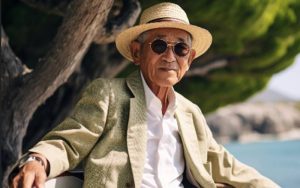Blue Zones, these captivating regions scattered across the globe, have intrigued researchers with their inhabitants’ extraordinary longevity and robust health. As a scientific and medical expert dedicated to sharing complex knowledge with the public, I am excited to delve into the scientific studies that shed light on the secrets behind Blue Zones. Let’s explore each Blue Zone region, interwoven with real-life anecdotes and insights from groundbreaking studies conducted by renowned researchers, to uncover the keys to longevity.
Table of Contents
Ikaria, Greece - The Island Where People Forget to Die
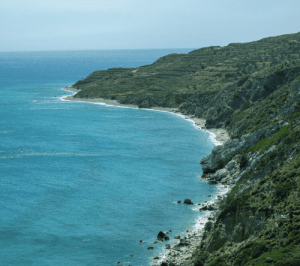 In Ikaria, the “Island Where People Forget to Die,” the population enjoys an unusually high number of centenarians. A study by Dan Buettner and his team identified Ikaria as one of the original Blue Zones. The researchers found that Ikarians possess a unique set of lifestyle practices contributing to their exceptional lifespans (Buettner et al., 2005).
In Ikaria, the “Island Where People Forget to Die,” the population enjoys an unusually high number of centenarians. A study by Dan Buettner and his team identified Ikaria as one of the original Blue Zones. The researchers found that Ikarians possess a unique set of lifestyle practices contributing to their exceptional lifespans (Buettner et al., 2005).
Ikarians follow a traditional Mediterranean diet, which includes an abundance of fresh vegetables, olive oil, whole grains, and locally sourced herbs. This diet is rich in antioxidants and anti-inflammatory properties, potentially contributing to reduced risk of chronic diseases like heart disease and certain cancers.
Physical activity is a natural part of daily life for Ikarians. They engage in regular low-intensity activities, such as walking, gardening, and tending to vineyards. Research suggests that this consistent, moderate activity is beneficial for cardiovascular health and overall well-being (Buettner et al., 2005).
Ikarians also enjoy a strong sense of community and social connection. Residents often gather in local cafes to share stories and enjoy each other’s company. This social cohesion and emotional support may play a significant role in their longevity.
A heartwarming anecdote features Giannis Karimalis, an Ikarian resident who, at 107 years old, continues to actively tend his vineyard. He attributes his long life to “working in the vineyard and eating fresh, locally grown produce” (The Guardian).
Okinawa, Japan - Land of Centenarians
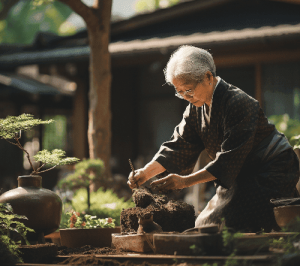 Okinawa, Japan, is another renowned Blue Zone, famous for its centenarians who age gracefully. Researcher Luis Rosero-Bixby and his team found that Okinawans benefit from low levels of stress and robust social support systems, contributing to their longevity (Rosero-Bixby et al., 2013).
Okinawa, Japan, is another renowned Blue Zone, famous for its centenarians who age gracefully. Researcher Luis Rosero-Bixby and his team found that Okinawans benefit from low levels of stress and robust social support systems, contributing to their longevity (Rosero-Bixby et al., 2013).
The Okinawan diet, known as the “Okinawan Way,” emphasizes plant-based foods like sweet potatoes, vegetables, and soy products. This diet is nutrient-dense and low in calories, possibly contributing to a lower risk of chronic diseases and promoting a healthy body weight.
Okinawans also follow the concept of “Hara Hachi Bu,” which means eating until they are 80% full. This mindful eating practice encourages calorie control and portion moderation.
Physical activity is integral to the Okinawan lifestyle. Residents engage in regular exercise, including tai chi and other traditional martial arts. These activities not only contribute to physical health but also foster a sense of community and social bonding.A heartening anecdote follows the story of Ushi Okushima, a lively 104-year-old Okinawan woman, who attributes her longevity to a simple philosophy: “Smile often, help others, and eat your vegetables” (NBC News).
Ogliastra, Sardinia, Italy: Mediterranean Family Life
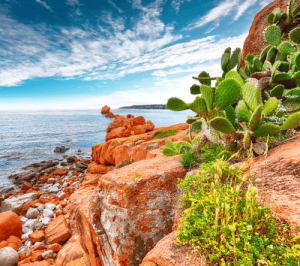
In the mountainous region of Ogliastra, Sardinia, Italy, an unusually high concentration of male
centenarians has earned it the title of a Blue Zone. While Sardinian genetics play a role in their longevity, as highlighted in Dan Buettner’s study, lifestyle factors remain paramount. The study emphasizes that “the inhabitants’ dietary choices and social practices significantly contribute to their exceptional lifespans” (Buettner et al., 2005).
Ogliastrans follow a traditional Mediterranean diet, similar to that of Ikaria. The diet includes locally sourced, plant-based foods, such as whole grains, beans, vegetables, and goat’s milk products. This diet provides essential nutrients and antioxidants, which may promote health and longevity.
Family and social bonds are central to Ogliastran life. Multi-generational families often live together, fostering strong support systems and social connections.
A heartwarming anecdote features Antonio Todde, who lived to the age of 112 and was considered the oldest man in the world until his passing in 2002. Antonio attributed his long life to a simple and joyous perspective: “Life is short, but it’s beautiful” (BBC News).
Nicoya Peninsula, Costa Rica - Pura Vida Lifestyle
 On the Nicoya Peninsula in Costa Rica, people have a higher chance of reaching the age of 90 and beyond. A study by Luis Rosero-Bixby and his team reveals that Nicoyans benefit from low stress levels and robust social connections. The study emphasizes that “maintaining positive relationships can significantly contribute to a longer life span” (Rosero-Bixby et al., 2013).
On the Nicoya Peninsula in Costa Rica, people have a higher chance of reaching the age of 90 and beyond. A study by Luis Rosero-Bixby and his team reveals that Nicoyans benefit from low stress levels and robust social connections. The study emphasizes that “maintaining positive relationships can significantly contribute to a longer life span” (Rosero-Bixby et al., 2013).
Costa Ricans have a phrase that sums up their lifestyle: “pura vida.” Pura Vida, the essence of “pure life,” embodies a philosophy of embracing simplicity, finding contentment, and cultivating a profound appreciation for the beauty of life and the natural world.
Nicoyans adhere to a traditional diet consisting of beans, corn, tropical fruits, and local herbs. This diet provides essential nutrients and antioxidants, which may promote health and longevity. Nicoyans embrace a strong sense of community, participating in regular social gatherings and community events. These close-knit relationships contribute to emotional well-being and a sense of purpose.
Loma Linda, California, USA - Adventist Advantages
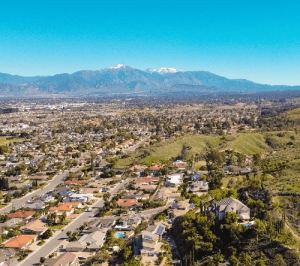 Loma Linda, California, is a unique Blue Zone where a significant proportion of its population belongs to the Seventh-day Adventist faith. Studies have shown that the Adventist lifestyle, characterized by vegetarian diets and a strong emphasis on exercise, contributes to their longevity. There is an abundance of evidence that whole food, plant based diets can help prevent diseases. Researcher Dan Buettner shares the story of Clarence Ing, a vibrant 102-year-old Adventist, who attributes his long life to his active lifestyle, saying, “I love working, and I still work. I enjoy my life and being helpful to others” (The Guardian).
Loma Linda, California, is a unique Blue Zone where a significant proportion of its population belongs to the Seventh-day Adventist faith. Studies have shown that the Adventist lifestyle, characterized by vegetarian diets and a strong emphasis on exercise, contributes to their longevity. There is an abundance of evidence that whole food, plant based diets can help prevent diseases. Researcher Dan Buettner shares the story of Clarence Ing, a vibrant 102-year-old Adventist, who attributes his long life to his active lifestyle, saying, “I love working, and I still work. I enjoy my life and being helpful to others” (The Guardian).
Adventists follow a predominantly plant-based diet, rich in fruits, vegetables, whole grains, nuts, and legumes. This diet is low in saturated fat and cholesterol, promoting heart health and reducing the risk of chronic diseases.
Adventists engage in regular physical activity, often participating in outdoor activities and volunteer work. This active lifestyle enhances physical fitness and fosters a strong sense of purpose and community.
Conclusion
The Blue Zones, each with its distinct lifestyle practices, diets, and social conditions, offer valuable lessons for achieving longevity and well-being. Stories about exemplary residents of Blue Zones like Giannis Karimali and Ushi Okushima underscore the power of their lifestyle choices for increasing lifespan. By embracing the essence of each Blue Zone – whether it’s the Mediterranean diet of Ikaria, the close-knit communities of Okinawa, or the purpose-driven lives of Loma Linda – we can all take meaningful steps towards a longer, healthier, and more fulfilling existence.

